Ala Moana is a large oceanside park in Honolulu. On its east (Diamond Head) side it is separated from Waikiki by the Ala Wai canal and the Waikiki Yacht club which, oddly enough, is not in Waikiki. On the north (mountain, mauka) side, it is separated from Ala Moana mall, Nauru tower, and Ward shopping center by Ala Moana Boulevard. On the west (Ewa) side it is adjacent to the small harbor of Kewalo Basin. And on the south (ocean, makai) side, it borders Ala Moana beach and Magic Island which, oddly enough, is not an island.
I have located 11 baobab trees in Ala Moana park, planted in four groups generally near the little canal that runs along the mauka side of the park. The canal gives the park its name -- "ala" means "road" in Hawaiian, and is used for canals as well, whereas "moana" means ocean. This little canal is connected to the ocean at both ends, one end connected to the Ala Wai harbor, the other end connected to Kewalo Basin.
I have called the four groups the Diamond Head (at N21 17.349', W157 50.604'), the middle (at N21 17.421', W157 50.848'), the Ewa (at N21 17.452', W157 50.931'), and the Ewa2 (at N21 17.512', W157 51.123') groups, reflecting their relative positions.
These pictures show a large grassy part of Ala Moana park, looking
towards the ocean.
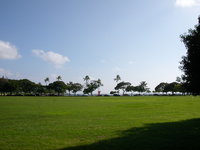
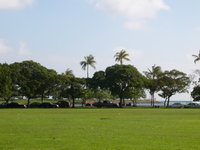
During winter in Honolulu it is usually easy to spot the golden plover (Pluvialis Fulva, Kolea). It spends the late spring and summer in Alaska and Siberia, and overwinters in Hawaii and elsewhere. It's a long flight, with no movies and no meal service, but at least it's cheap -- if you make it (and most of them apparently do). Since the golden plover eats bugs, it is smart not to spend the winter in Alaska.
In April, when these pictures were taken, the Kolea is almost ready to leave for Alaska again. This is a very down-to-earth bird (pun intended) and doesn't make a big fuss of its trip.
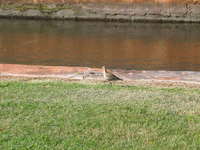 |
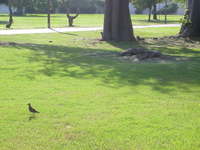 |
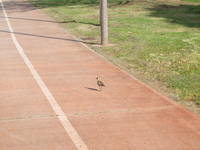 |